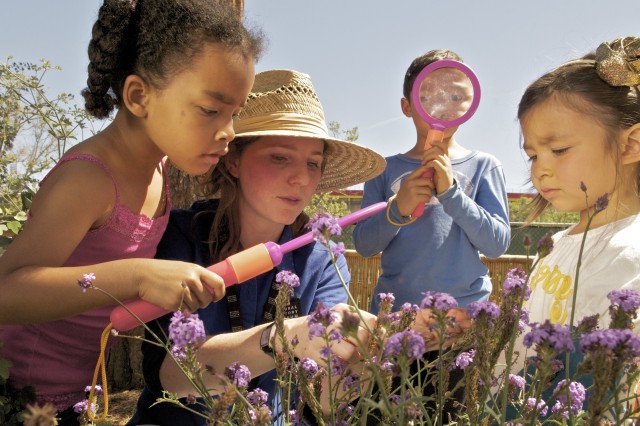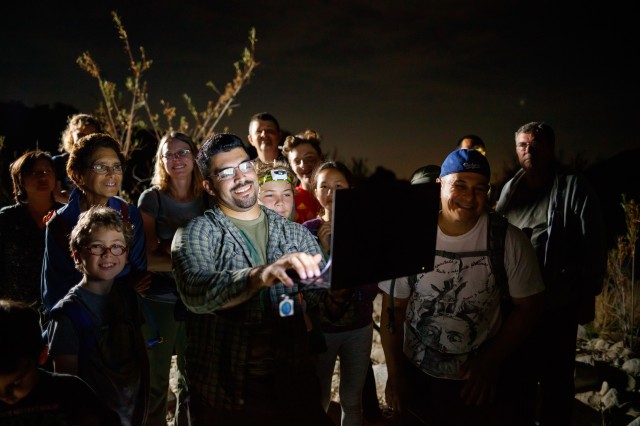The Hart Museum remains closed. Los Angeles County has approved a plan to transfer the William S. Hart Museum and Park from the County to the City of Santa Clarita.
City Nature Challenge All Stars
The tally from NHM’s annual collaborative urban nature global event is in, and the results will astound you! Meet some of the keen-eyed uber observers of L.A.’s wild scene, our stellar local community participants.
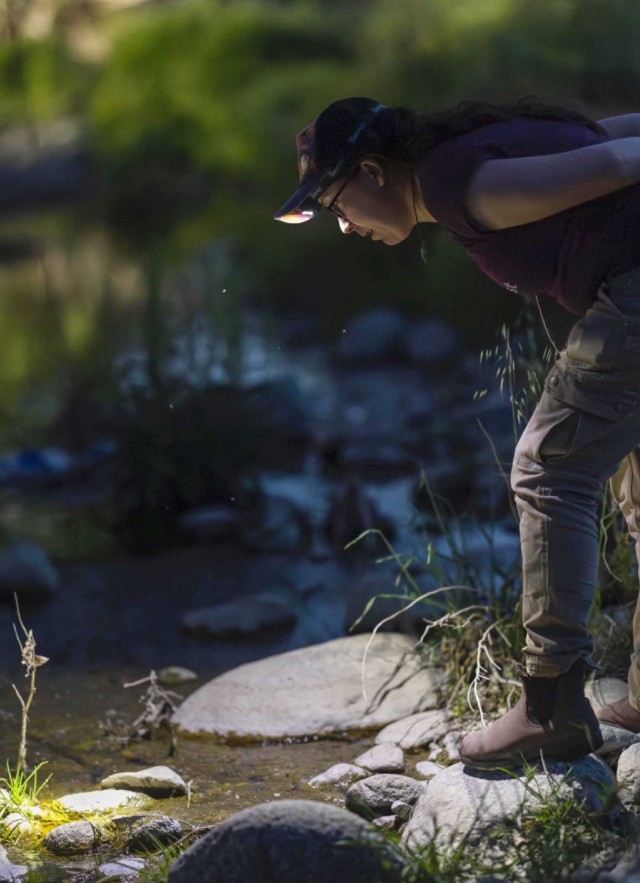
Published June 6, 2023
The City Nature Challenge—arguably the friendliest species-wide competition on Earth—was a win-win for humans and wildlife this year. The global community science event, co-founded and organized by NHM and the California Academy of Sciences in 2016, invited people of all ages to observe and submit pictures of wild plants, animals, and fungi from April 28 to May 1 to iNaturalist. This year’s tally, observed by our community scientists, was eye-popping: 66,394 observers in 482 cities in 46 countries made 1.87 million observations. More than 2,570 of these species were rare, endangered, or threatened, underscoring the power of community science to track real-time changes in our planet’s biodiversity.
Our hometown nature lovers and city explorers were out in force with flashlights, binoculars, sturdy shoes, water bottles, and cameras of all kinds. A total of 1,671 Los Angeles County residents (more people observing than ever before) went into their yards, neighborhoods, city parks, and mountain trails and made 25,542 observations! The total number of species caught on camera—a whopping 2,646, including 72 rare, endangered, or threatened—will be a boon to science, literally illuminating the wild flyers, crawlers, hoppers, and bloomers who also call L.A. home.
“In an age where the most common depiction of Los Angeles is Hollywood, the City Nature Challenge helps dispel the misconception that our city, or any other city for that matter, is necessarily isolated from nature,” said Valerie Ahumada from NHM’s Community Science Office. “More so, it demonstrates how much more there is to learn about L.A.’s environment. Data like this is what allows us to make informed decisions on how to best protect this sprawling landscape we call home.”
A few SoCal uber contributors to L.A.’s leaderboard shared their recollections of the turbo-charged meet-and-greet and how they made the acquaintance of their wild neighbors.
Boaz Benaiah Solorio
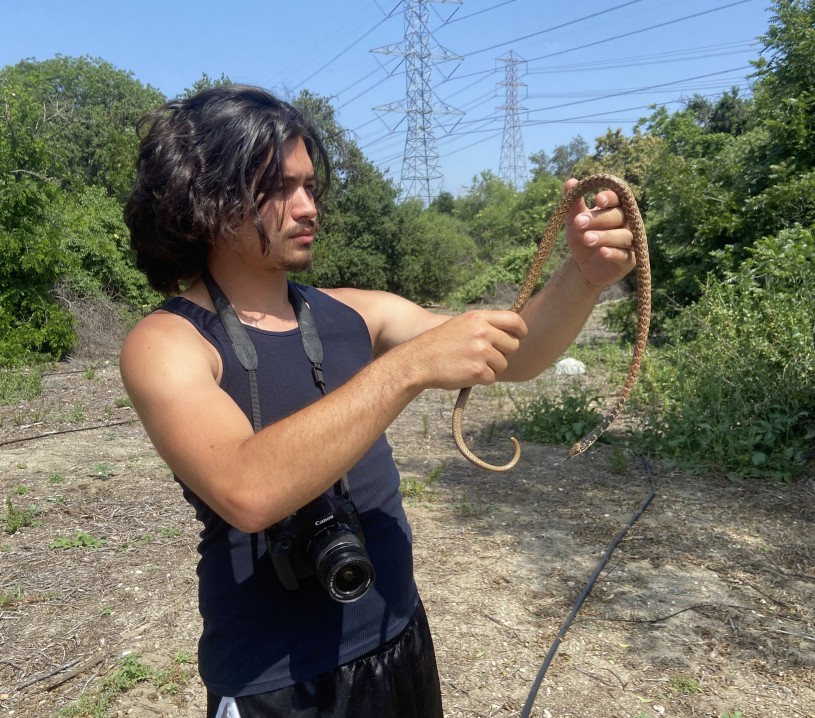
Boaz Benaiah Solorio (@boazsolorio) who ranked fifth in the City Nature Challenge in L.A. County with 548 observations, is a wildlife photographer, naturalist, and educator at HawksLA (Northeast LA) and Healthy Footprints Adventure Academy.
For Solorio, any weekend spending quality time with scorpions, snakes, and bees was pure happiness.
“I've always loved being outside, learning about animals. The earliest I can remember ever doing anything outside was when I lived in this little apartment, I was maybe about two years old. I would go and collect dead honeybees in the back and just line them up, observe them and stuff. When I was in kindergarten—the theme of that semester was insects and bugs—I remember being so enamored with them. I loved seeing all the different types. I got to take home a pet millipede! Ever since then, I've been learning more and more. I'd go into my front yard, flip things over and see a bunch of European earwigs, garden slugs, isopods, and then when I started going hiking and camping, I saw amazing things. I didn't understand it as a kid, but growing up, I realize now that there's like 6,500 different types of plants down here in California. And then we also have 1,600 different species of bees. We have roughly 40 different snake species. Because California in general is one of the most diverse ecosystems in the world. Every time [I go out] something will surprise me. This place is just utterly beautiful, utterly special, utterly unique; I never get tired of it.”
Solorio loved photographing and identifying the nature around him so much that he decided to get himself a camera, saving up for it working at a pizza restaurant, he said. The investment paid off in the scientific data collection department, too; in that one weekend of the City Nature Challenge, Solorio observed 220 species. His technique? Patience. “I would spend hours standing in front of a big blue California buckwheat, and wait for things to fly by. And as I continued to do this for hours on end, I noticed different flight patterns, different colors. And even though there were minimal flashes of color and light, I would kind of get an idea of which bees were which.”
"Sometimes I am reminded that even the things that I've seen a million times will blow the minds of people who haven't [seen them]," said Solorio. "Most people see L.A. as a hotspot for people, but there is amazing wildlife out here that so many people are unaware of."

Boaz Solorio
Common Green Darner (Anax junius)
Boaz Solorio encountered this mating pair of dragonflies as he was heading back from Rio Hondo Bike Trail in Pico Rivera: "They had been startled by my presence and flew off, but after a few attempts to sneak up to them, I finally managed to get a picture in focus."
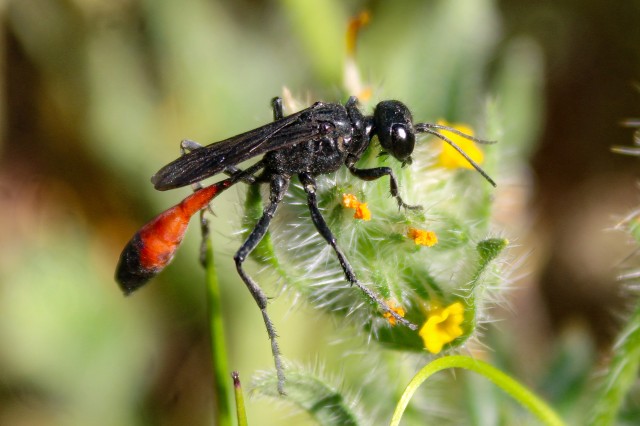
Boaz Solorio
Boaz Solorio and his friend had visited the Fremont Buttes, and as they began to hike up the hill to a rock formation, noticed this Slender Sand Wasp (Ammophila sp.) digging beside the trail. "As I approached, it cautiously landed on a plant and stood its ground, which allowed me to capture what I can only describe as its good side."
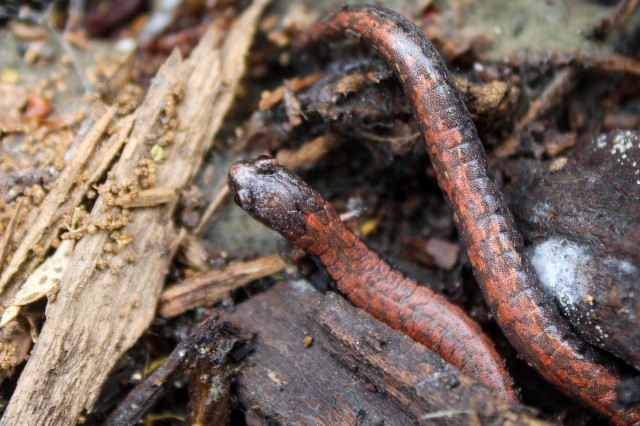
Boaz Solorio
Solorio had visited Hahamonga Watershed Park in Altadena on May 1, as he had a class to teach with Hawks LA. "I arrived a little early, so I began flipping over logs within the frisbee golf course. I found Shoulderband Snails, California Toads, and this beautiful Black Bellied Salamander (Batrachoseps nigriventris)."
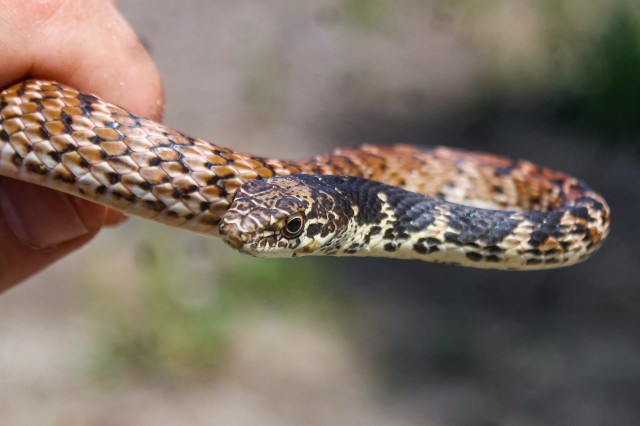
Boaz Solorio
Solorio and a friend were hiking in Whittier Narrows, El Monte and found a Red Coachwhip (Masticophus flagellum pisceus) underneath a trash can.
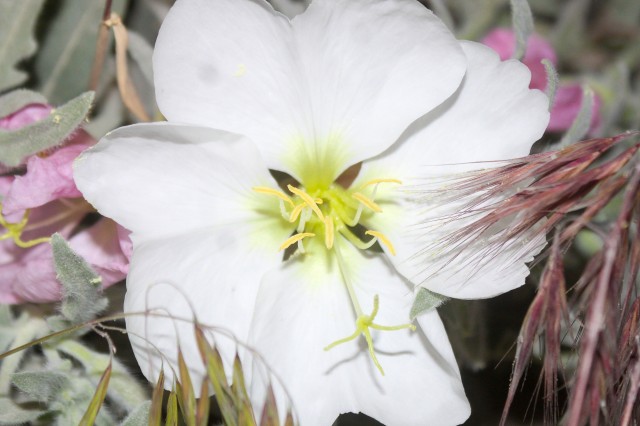
Boaz Solorio
Solorio and a friend had "been cruising after dark in the outskirts of Lake Los Angeles, hoping to find snakes slithering across the streets." As he pulled over to go over the route, "I was absolutely overtaken by the beauty of this California Evening Primrose (Oenothera californica), and excitedly jumped out of the car to photograph it."
1 of 1
Common Green Darner (Anax junius)
Boaz Solorio encountered this mating pair of dragonflies as he was heading back from Rio Hondo Bike Trail in Pico Rivera: "They had been startled by my presence and flew off, but after a few attempts to sneak up to them, I finally managed to get a picture in focus."
Boaz Solorio
Boaz Solorio and his friend had visited the Fremont Buttes, and as they began to hike up the hill to a rock formation, noticed this Slender Sand Wasp (Ammophila sp.) digging beside the trail. "As I approached, it cautiously landed on a plant and stood its ground, which allowed me to capture what I can only describe as its good side."
Boaz Solorio
Solorio had visited Hahamonga Watershed Park in Altadena on May 1, as he had a class to teach with Hawks LA. "I arrived a little early, so I began flipping over logs within the frisbee golf course. I found Shoulderband Snails, California Toads, and this beautiful Black Bellied Salamander (Batrachoseps nigriventris)."
Boaz Solorio
Solorio and a friend were hiking in Whittier Narrows, El Monte and found a Red Coachwhip (Masticophus flagellum pisceus) underneath a trash can.
Boaz Solorio
Solorio and a friend had "been cruising after dark in the outskirts of Lake Los Angeles, hoping to find snakes slithering across the streets." As he pulled over to go over the route, "I was absolutely overtaken by the beauty of this California Evening Primrose (Oenothera californica), and excitedly jumped out of the car to photograph it."
Boaz Solorio
Laura Schare
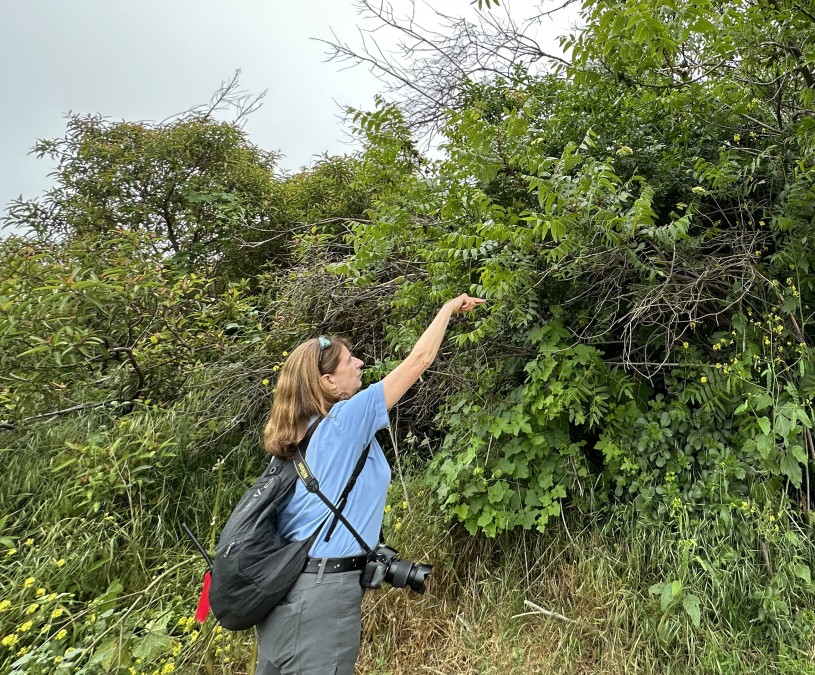
Laura Schare's iNaturalist name is @scubabruin—“scuba like scuba diving and Bruin like UCLA Bruins.” The Encino resident had a very busy City Nature Challenge weekend, ranking 7th with 509 observations in the bioblitz. Schare says her nature fascination had deep roots.
“I was always the kid watching Jacques Cousteau, Disney's Wild Animal Kingdom, and any show with animals like Flipper, Lassie, Gentle Ben, etc. My reading was much the same, All Creatures Great and Small, Black Beauty, Misty of Chincoteague (lots of horses). There was a dairy near my elementary school and I was always there, playing with the calves, searching for rodent bones.” She now works as the newsletter editor of a non-profit, Jumpstart Nature. She found out about the City Nature Challenge while talking with NHM's Herpetology Curator, Greg Pauly, at a museum event in 2016.
“I went out looking for reptiles and amphibians and it snowballed from there. I got involved in Heal the Bay and when I found out the Natural History Museum was doing the SuperProject that really sealed the deal for me. And it's been really, really terrific.” The high points of her nature fandom in the 2023 CNC involved backyard birding and metamorphosis.
“I will tell you one particular “aha” cool moment that I can think of right off the top of my head. When we were at King Gillette Ranch on the Sunday of the weekend, as we're taking this little hike, and it wasn't me who found it at first, but some person found a chrysalis on the black sage. It was a variable checkerspot chrysalis, and it was stunning. I kept looking and I found a fully formed chrysalis and a caterpillar. I loved that one. It was a whirlwind weekend.”
Another sighting was closer to home.
“This surprised the heck out of me. I have a bird feeder. And I have never had this particular bird visit my yard. And then the Friday morning the 29th, a black-headed grosbeak came to my feeder. So that was huge for me because I think I've only seen one once before, ever. So it was kind of a big lifer... Not really a lifer bird, but close.”
Her shutterbug technique? Pointing her DSLR camera and cellphone (with a handy macro clip-on lens) on a blossoming plant. “I'll do a quick scan to see if I'm seeing some buzzing around.” Like Solorio, Schare says sometimes it's just a matter of waiting. I used to hike to get to the destination: ‘We're going to go to the top of this,’ or ‘We're going to go out three miles and come back,’ or that kind of thing. But now it's like, "Why bother racing through if I'm not even looking down at and admiring these gorgeous lilies or the cottontail right in front of me, or listening to the birds chirping in the trees?' So I've really slowed down a lot and stopping and taking in the moment to really see what's happening around me. And that's been fun because it's just such a connection, you know?”
"I really hope other people will find out how engaging it can be in nature," says Schare. "If they don't love it, they're not going to want to protect it. So I want everyone to get out there and love it."
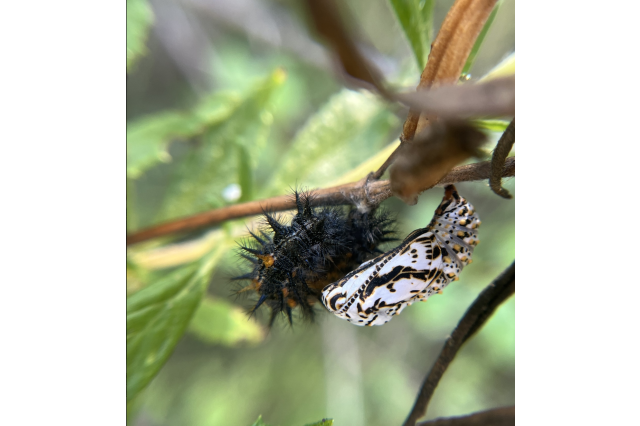
Laura Schare
A variable checkerspot chrysalis on black sage at King Gillette ranch.
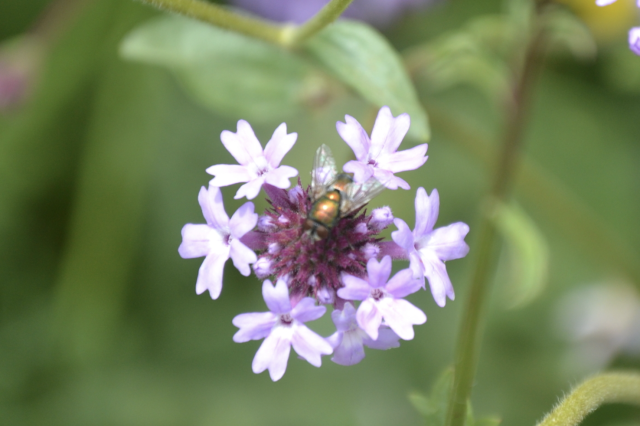
Laura Schare
Schare snapped this photo of an Australian Sheep Blow Fly, Lucilia cuprina, while in Malibu.
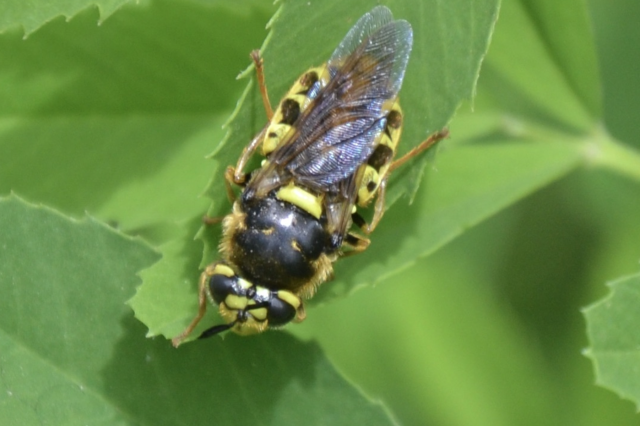
Laura Schare
Laura Schare spotted this soldier fly (Stratiomys)at Malibu Lagoon. "The soldier fly was kind of crazy because I was on my way out. I was exhausted...and then I just happened to notice 'cause it was large and colorful. It just stood out on this leaf for me, and I was able to get a picture of it. It was pretty cool."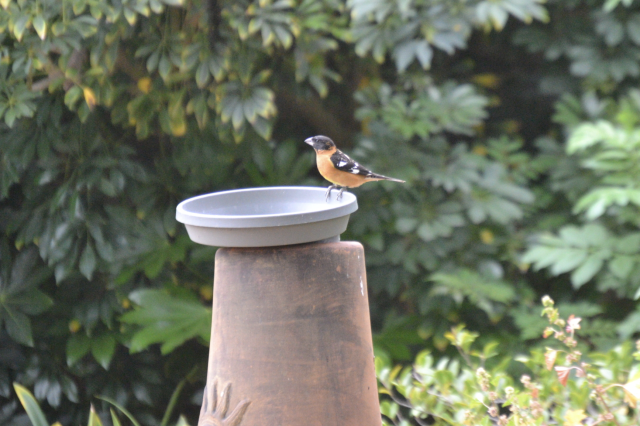
Laure Schare
Schare said this black-headed grosbeak "surprised the heck out of me. I have a bird feeder. And I have never had this particular bird visit my yard."
1 of 1
A variable checkerspot chrysalis on black sage at King Gillette ranch.
Laura Schare
Schare snapped this photo of an Australian Sheep Blow Fly, Lucilia cuprina, while in Malibu.
Laura Schare
Laura Schare
Schare said this black-headed grosbeak "surprised the heck out of me. I have a bird feeder. And I have never had this particular bird visit my yard."
Laure Schare
Olivia Miseroy
Olivia Miseroy (pictured at the top) has a job that melds perfectly with being a City Nature Challenge top scorer. A science communicator and Regional Park Superintendent of Los Angeles County’s 16 Wildlife and Wildflower Sanctuaries, Miseroy (iNaturalist name: fowlivia) makes observations in the underrepresented desert areas of northern L.A. County. She spent the challenge weekend scouring the desert regions with fellow L.A. County Parks employee Jonathan Numer (Jonathan27) who earned the #1 rank in L.A. County with 1,212 observations (Miseroy came in 4th with 955). Numer is the Regional Park Superintendent at the Devil's Punchbowl Natural Area Southern California which has recently been affected by the Bobcat Fire that burned across the San Gabriel Mountains, north of L.A. Numer is recording the biological recovery within the park and Bobcat Fire boundaries. Miseroy says they both like to go into the desert region's often rugged terrain because of the plentiful biodiversity there.
“The CNC is a good way to get data for parks and cover the desert part of L.A., and it’s a fun challenge. My goal is to see how many species I can get in that short amount of time.” She said her favorite sighting that weekend was of a Crotch’s bumblebee.
“Anytime I see anything that's threatened or endangered, it's very exciting. And we get these bumblebees, this isn't the first time I've seen it at the wildlife and wildflower sanctuaries, but I was really happy to be able to get it during the City Nature Challenge. These are protected spaces and we have these endangered animals that are living on them. In 2020, [the area] burned down in the Lake Fire. So it's kind of good to see that there is, it's slowly getting plants and wildlife added again at this spot that suffered from a catastrophic wildfire...We also came across fresh bear tracks, which was exciting.”
Easily one favorite of the nearly 1,000 shots she took was the delicate Birds-eye gilia, a spring wildflower, which had 10 petals. “We’ve never seen something like that. It was really bizarre. I love finding weird anomalies; It has twice the number of petals it would normally have. That blew my mind.”
Numer, though on a professional mission to capture and catalog, is equally amazed by the animals and plant species when he encounters them in his off-hours. In one weekend, the identifiers (including researchers, naturalists, educators, or other community members) who review the observations confirm he identified an astounding 430 species.
“I have always been interested in going into nature and I hike a lot so I can get to lots of places that are hard to reach because they're so remote,” said Numer. “I like going to the side of the mountain which some people say is crazy, but you don’t have to go super far or crazy if you want to contribute to iNaturalist; even in your backyard you’ll find so much more than you’ll expect.”
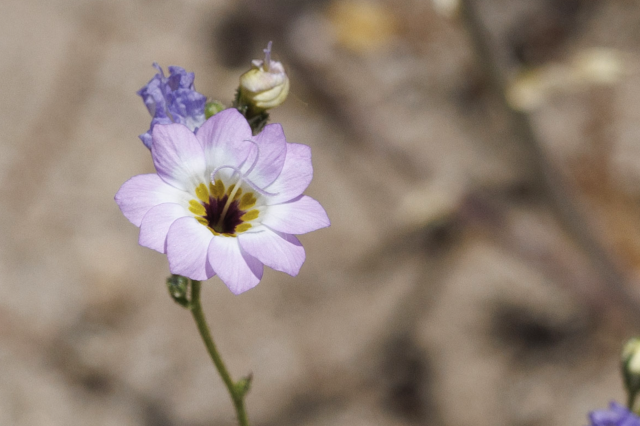
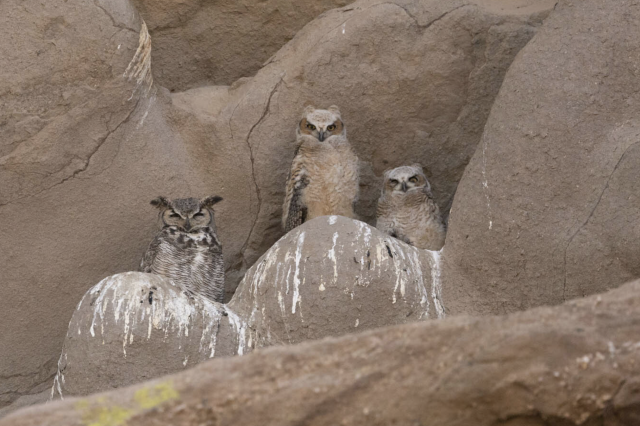
Olivia Miseroy
Great Horned Owl (Bubo virginianus), on a cliff nest with older chicks.

Jonathan Numer
Olivia Miseroy snapped a shot of this (likely nesting) Peregrine Falcon at Devil's Punchbowl.

Olivia Miseroy
Olivia Miseroy saw this Crotch's bumblebee, a threatened species of pollinator, at a wildflower sanctuary.
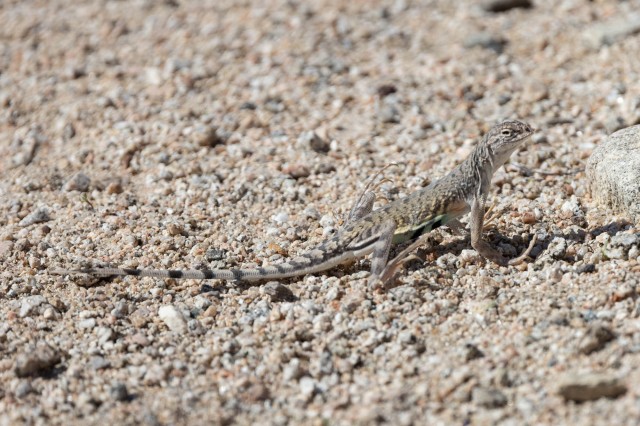
Olivia Miseroy
Miseroy saw this Zebra-tailed Lizard at George R. Bones Wildlife Sanctuary west of the Poppy Reserve State Park. NHM's Herpetology Curator, Greg Pauly noted that this identified pretty far west for their range in the Mojave.
1 of 1
Great Horned Owl (Bubo virginianus), on a cliff nest with older chicks.
Olivia Miseroy
Olivia Miseroy snapped a shot of this (likely nesting) Peregrine Falcon at Devil's Punchbowl.
Jonathan Numer
Olivia Miseroy saw this Crotch's bumblebee, a threatened species of pollinator, at a wildflower sanctuary.
Olivia Miseroy
Miseroy saw this Zebra-tailed Lizard at George R. Bones Wildlife Sanctuary west of the Poppy Reserve State Park. NHM's Herpetology Curator, Greg Pauly noted that this identified pretty far west for their range in the Mojave.
Olivia Miseroy
